12 years ago by
Today’s career interview is with the amazing Timothy Goodman. You may know him from his 40 Days of Dating project (more on that in the interview), but he’s also a fantastic artistic director and illustrator.
That’s our focus in this interview, and I hope it will answer a lot of the questions people ask me all the time: how to work for yourself, how to find your creativity, and how to make girls crazy (answer in question n°7).
And now to Tim!
If you had to give yourself a job title, what would it be?
I was at a party, and I was introduced to this guy who seemed sort of creative, and we were talking and I asked him what he did for a living, and he looked at me and said “whatever I can get away with.” I had this epiphany, and got thinking that I want to get away with whatever I can.
And that is where I am at right now, whatever it is, the title of art director or graphic designer, I feel like they can be so limiting, especially in our industry.
What was your dream job when you were a kid?
It is funny, I didn’t really have one. I was very unambitious as a child. This thing of “getting away with shit” has always been a part of who I am. I have always been really fascinated with getting over someone with authority, and I have always been really fascinated with pulling a fast one on someone, in a light-hearted way. Even my graphic designer career started in high school when I would make passes that matched the school’s tardy passes. So I made them in Microsoft Word, and then I forged teachers’ signatures. So I was a cheater.
Where did you grow up? What did your parents do?
I grew up in Cleveland, Ohio. I was a really horrible high school student; I barely graduated. All my friends went to college and I was depressed about that.
I started working for this guy who ran a home improvement company for really nice homes, named Dave, and I worked for him for almost four years. In the course of that I started going to community college [local schools where you don’t have to apply, but can just register for classes] and taking classes. So I was kind of doing both of those things at the same time, full-time.
This guy became a big influence for me because I grew up without a biological father and I never really had a strong male influence in my life, and I was missing that void. I think that was part of why I was unambitious growing up or why I had never really considered a career when I was young. So in the course of those four years, I started taking interior design classes because we were working in these really nice homes and I thought I might have a knack for it or something.
Then I took drawing classes and I had a really great teacher who pushed me to keep drawing and in the course of that I thought to try graphic design. It felt like a really nice balance between things. And I realized that I didn’t want to be in Cleveland, I wanted to be in a major metropolitan area, Los Angeles or New York.
So what brought you to New York?
I moved here when I was like 23 to go to SVA, [The School of Visual Arts] and being older and going back to school, I kind of treated it like a job. I felt that I had this one shot to make something out of myself, or else I would have to move back to Cleveland with all of these loans [it’s common in the US that students have loans to pay back when they leave college] and start painting houses again. I don’t come from money and I had to pay for everything myself–like school when I came here– so it was really kind of all on me.
I always tell my students now, you go after what you want to do as much as who you want to work for…
And when you were at school were you interning? How did you first break into the design world?
My junior year I had my first internship at VH1, I was a writing intern, for one semester. I was always interested in writing, but I also learned from that internship that it is important to find out what you don’t want. I didn’t want to work at a place like VH1 or MTV, because for me personally it wasn’t my cup of tea. It wasn’t what I was going to school for—which was graphic design—but I love writing, and I love wearing many hats so I was intrigued enough to try it out for a semester. I had a great time, and later it helped me tremendously when I would pair up with a copy writer while working in branding.
And then I had a couple of other internships, a small internship at a Studio.
When I graduated I started to work with this guy in book jackets, I was a book jacket designer for a year. He was a professor at my school; I never actually had him as a teacher. I always tell my students now, you go after what you want to do as much as who you want to work for, because I am a big believer in mentors. I think it is really important early on for creative people to find people that really matter and to go after working for them. This guy John for instance, he could have been designing fucking baby diapers for all I care, but I just knew that I wanted to work for him.
When I left book jackets and when to work in branding with this guy Brian Collins [Collins has his own branding agency, called Collins] for two and a half years before I went to work for Apple, I knew I wanted to work for him because I loved the philosophy behind what he was doing and I admired what he stood for, I admired the work he did. You have to use these people as a template for where you want to go, and be better than them.
How did you get to Apple? What were you doing there?
So the Apple thing kind of came up because this creative guy [at Apple] was good friends with my old boss, and he was looking for someone. I was very hesitant about going out there. I love New York and wasn’t in love with San Francisco.
Working for Apple as a graphic designer is the closest you can get to working for the CIA as a creative person. It is so confidential. There are rooms within rooms that you have to badge in and out of. In a way, when you are working on such high-profile stuff, with no windows in the room or anything, and you know that the whole world is going to see whatever you are working on in the next six months, you get a thrill from that. It is pretty fascinating. I was rushing home every night to do freelance though.
…Girls are much more impressed with the New York Times than Apple.
When did you start freelancing in your career?
I started doing it early on. It was during the branding job, the one before Apple, that I started doing illustrations for the New York Times, and to me that was such a thrill. When you do these op-ed pieces you get a couple of hours to come up with ideas and two or three hours to finish it, so it has to be done in that workday.
So I would be rushing out in the hallway, drawing a doodle, taking a picture on my phone, sending it to the art director, getting it approved and just fitting it in my day.
I loved commentary on things that were happening in the world. Plus when you get your name in the paper you can tell your mom “get the paper tomorrow!” And also girls are much more impressed with the New York Times than Apple.
How did you start freelancing for the Times?
A lot of people that I admired at school did that work, so for me and my brain as a young designer, I always thought that that was the type of work I wanted to do.
I understood that I wanted to make money and work on bigger stuff, and I like the idea of collaborating, but then I also like having an artifact. Like a book jacket or a drawing in the New York Times with just your name on it.
It had always been something that I wanted to do so I reached out early on just because you know people and you get an email address… I had never done editorial illustration, but in order to get it, I put stuff on my website to show that maybe I could think that way, maybe I could do stuff like that. Even if it wasn’t real or published, I still had to show something and I think that it is important.
How did you build your network to get all of this freelance work? How did you get in touch with people?
I think it is important to be pleasantly aggressive. That’s something I always tell my students, you have to keep emails short but just keep on it. I think it is really important to let people know that you are alive. And like I said, put stuff on your website to show that you are able to do certain things.
How did you manage that work with the full time work you were doing with Apple?
I would turn down anything when I got called by the NY Times early on. If I had a night and I had plans, I would make it work. From there, I started doing pieces for Newsweek or Time, Bloomberg, Wired. And that is when it got intense at Apple because I was so in love with all of the side work I was doing and I was having a real conflict with my Apple work. I wasn’t in love with San Francisco and I wasn’t necessarily in love with the job. So everything just didn’t feel right.
I was rushing home on weekends to do all of this work that I love and it really started feeling like I came to a crossroads. I either needed to stay on this path with Apple… There is this term golden handcuffs, because they give you great stock benefits and if you stay at Apple for years and years things will be really good for you. But if I were to leave and work for myself, that was the time. And I had so many ideas, and immediately just moved back to New York.
Do you have any tips that you feel really helped you grab attention?
I think it is really important to keep it as short as possible because no one who is super busy is going to have the time.
Sometimes I get emails that feel like a template. Not that I need you to stroke my ego but you need to say why [you want to work with me], and give me something, otherwise I just feel as if you are sending this to 200 people. So I think it important to be personal with these things.
There are no rules to this thing and you can break through any ceiling you want as long as you stay determined and you continue that.
You do a lot of different kinds of work projects– do you have different approaches? Is it very different when you are working on an illustration project versus a design project?
The last year I have been doing more murals and installation work. I always walk a client through my process– I am big on showing references early on to what inspires me. So I put together presentations of this stuff, and I really am super big on only doing marker sketches for everything.
Then once it is approved, I take it to step two. I do computer rendering. So there is a lot more that goes into that sort of stuff than if I am just doing an illustration. I just did the cover of Time magazine a couple of weeks ago that got killed, but I just did a marker sketch at first. Quick, with arrows, and then they go through it and they pick one and then I execute it. So that is a much easier process obviously than if I am doing an installation.
Do you like to have your work critiqued while you are working on it?
I love feedback. I love collaborating with people. I have a studio manager and we talk every morning and go over what is happening. I love talking to people who aren’t creative, I think that is important as well.
So you have a team working with you?
It is just me, a studio manager and freelancers according to whatever I am working on. Part of my commitment issues! The idea of having a studio with my name on it and people at a desk…
What’s your ideal work environment? Do you prefer to work from home? To be isolated?
Yes and no, it just depends. With the Forty Days project, I love just going to a coffee shop and putting my headphones in and writing. I have to get out, I have to see people. But with other things, if I am trying to come up with ideas for clients, with my sketchpad or something, I like to be in the studio at a desk.
How do you feel when something you worked really hard on doesn’t get made or published?
Well early on you can get really heartbroken. For any creative person, it is heartbreaking the first couple of times it happens because you so identify with your work in a way.
I think now I can shrug it off. I mean it is easier now, and I guess that just comes with experience and time and successes. There is only so much you can do.
Now my life is very consumed with the Forty Days project and it has been for six to eight months now. When you are the client, you have to give yourself new challenges and set goals and timelines and have people help you. Because when you are creating all of the content and you are your brand… I want to keep doing robust personal projects that push the boundaries of this whole idea of client work. I want to be a content creator more and more rather than keeping to being a graphic designer or an illustrator. I want to push more about what that means.
Let’s talk more about this dating thing. So you and your friend Jessica Walsh decided to try to date for 40 days and you both chronicled the 40 days through journal entries you then used to build a website. How would you describe the project?
Two good friends, opposite relationship problems, find themselves single at the same time. As a project they decide to date for 40 days. That is the gist of it.
What was the decision to do the project?
Well I think for Jessie and I it really came from a question of “how do you work your habits and your fears? Why do we have these habits and these fears in our individual relationship issues?” So I think anything should come from a real question like that.
Our story, if we did it with as much sincerity as possible, we hoped that it would resonate with other people, but with keeping it so personal and specific to us, knowing that millions of people have the same issues as us too, that maybe we could have a dialogue and touch people on a different level.
Did you always want to do something with publishing? It is a totally different kind of work from what you usually do.
No, I think it was always something I wanted to do. I have only been out of school for six and a half years, so things have been going so fast and I have always known that I wanted to get to a place where I could do projects like this, and I didn’t know how that was possible yet.
I did a project of Valentines for all of my Twitter followers once. I think I had 1100 Twitter followers at the time, and my goal was to draw every one of them a complete Valentine on Valentines Day. So I set up from 7am to 7pm. And it was 40 seconds per person, and I would draw, and I wanted it to be unique. So I would look at their profile picture or their bio and try to respond to that, draw it, and send a picture to them.
The reason why I wanted to do that is because I was spending so much time on Twitter, and I have all these relationships with illustrators and designers on Twitter that I don’t know. So what would it mean to make an analog gift for someone in a digital world? I was kind of baffled by that.
Through that project, I got so many great responses from people, and so many people were touched by that and they would make me gifts back, and I just loved that dialogue that you can create, especially in this world, in the digital world. I think that was the beginning of something for me, that I wanted to keep pursuing.
With the Forty Days project, we did have a dialogue with people because so many people could relate to us, whether or not they hated me; it was provocative in a way and it could bring something out. That is the beauty of what we can do as designers and art directors, is that yeah it is great for making people money or selling a product or something, but I think you can get some truth of something.
And what has come from the project?
We sold the film rights to Warner Brothers. So we are consulting the film, and also getting first crack at movie titles and stuff like that. Graphics and photography were important ways to tell our story so if that happens we will have first crack at that.
We are writing a book with Abrams. Kind of a two part book, so everything from the blog, but also new content.
We have released a shop where you can buy the artwork from the site, we are selling prints there and all of the proceeds go to the artists. There are a lot of people interested in us doing reality TV.
That is enough in terms of living and having my career. With shutting down and having to do interviews, I had to cancel work. So it is nice that things are a bit back to normal but there’s still lots of work to do.
Just believing in yourself is what it comes down to.
How do you deal with the chaos that is that type of lifestyle? Managing everything? When you don’t know if you are going to have money and now that you have all these projects…
I think it is really about having faith. When I had a full-time job at Apple the numbers showed that I could at least pay my rent with just the freelance work. You know you can live–eat and pay rent– with just the night and weekend work. And so knowing that and taking the step to do that, you just kind of have that faith. And obviously sometimes you will have a really big month, and another month you wont, but it always kinds of balances itself out and allows you to take time to do things. I am the Winnie the Pooh fan, and Christopher Robin, the little boy in Winnie the Pooh, he says “you’re better than you believe, stronger than you seem and smarter than you think.” Just believing in yourself is what it comes down to.
How do you choose what clients to take on?
When I did the Ace Hotel mural three or four years ago, that was the first time I did that style. I didn’t do it because I wanted to do “a style,” I just did it because it was speaking to an idea about New York. It felt natural to do it with paint markers and hand drawn. I was formally taught as a graphic designer, and all of a sudden people were like “we want you to do that thing!” So it was really fun, and I was at Apple and I did one cover of Time and a cover of New York Magazine that were similar. So now I get hired to do this thing, and sometimes I just say no, unless I am going to make a good amount of money, because I don’t ever feel like I am selling out on something.
It might suck to do something for two weeks that I have done before, but if the money is good I will get over it. I need some sort of new flavor to it otherwise it is dead to me. I get asked to do frames all the time, but I don’t get why someone would want to hire me for something that I have already done.
When do you decide that what you are doing is great and not crap?
If I am doing something and I am not quite sure about it, I think that is a good place to be in. If I am like “I don’t know if I like this!” I feel like you are getting into an unknown territory that I think is really rewarding.
And when do you decide that something just didn’t work?
Well that is the hard part I think. Sometimes it is easy to keep going. I had an old teacher that always used to say to me “if you don’t like where you are going or if you hit a roadblock, then don’t keep clawing through that wall, just turn around and go a different way.” I think ideas are constantly in flux for me, and you should have one hundred ideas, and you shouldn’t feel sold on any of them, you should be willing to give them up as you go along.
Do you feel like you have a community in the industry?
Yes, well that’s the New York thing too. I feel really blessed to be in this community and to have so many inspiring and encouraging friends all around me, people that I look up to. It makes a world of difference when you have that comfort blanket around you and it pushes you. Not that it is competitive, but I think that is really healthy in a way. I think that is really important.
Who are your mentors?
The people that I work for. This guys who hired me right out of school… Brian Collins who has the branding firm. I think people like that. Obviously you have heroes, like Bob Dylan or something. And my grandparents.
I tell my students to read whatever makes your heart sing, be inspired by music, read a book on philosophy, read whatever, go climb that mountain, run through the forest with your lover.
Do you have heroes? Is Bob Dylan your hero?
I always tell my students that it is kind of detrimental to my community. You need to stop thinking like a graphic designer, or whatever it is. Especially in our little community where we get so wrapped up in validating why we do what we do to validate our existence when no one gives a shit. You broke out of something using the tools we have to tell a story.
I tell my students to read whatever makes your heart sing, be inspired by music, read a book on philosophy, read whatever, go climb that mountain, run through the forest with your lover. Don’t read a book about fucking typography. Don’t read a book that says “This is how you make money in graphic design” or whatever. Obviously you have to know these things, that’s why you go to school. I have mentors in the industry, but I am much more inspired by musicians, artists and writers. People who are outside of my community.
So how did you get into teaching? You teach at SVA?
Since I was a student I had a good relationship with the dean of graphic design and then I was a teachers assistant with my old boss for two years. So when I moved back from San Francisco, the opportunity was there.
What kind of classes are you teaching?
I teach a typography class to juniors.
What is the best piece of advice that you have ever gotten? And is that the advice you give to your students?
There was a teacher that really inspired me. I am paraphrasing, because I don’t remember exactly how he said it, but he said to the class “You don’t want to die and have someone say ‘Timothy could have been a good designer.'”
And then he also said something like “All these little pieces of advice I am giving to you are jewels, and the thing is that only 3 or 4 of you are ever going to remember this.” So I always remember that part too; that always resonated with me because I didn’t want that to happen to myself. And I think that’s a tragedy, that there are so many designers in my field that aren’t doing the work that makes their heart sing.
I know you can’t always go after what you want because there is life and bills and family, relationships, and real world problems, but I think that so many of us don’t go after what we really want, and we don’t try, and your voice becomes the voice of whatever client you are working for. It is a tragedy that more young designers early on don’t find their voice, and their sensibilities to put into their work, and their humor, their point of view of things. And I think if that doesn’t happen, it will just be mechanical and you will have lost the opportunity, and maybe that isn’t important for everyone. So I tell my students that, you know.
What is your dream project?
It isn’t that I have a dream project. I want to continue to do the installation work I have been doing, it is kind of like the X factor. The x means the unknown, and I want to keep doing experimental work. Jessie and I have another potentially great idea for another kind of experiment that really challenges ourselves personally and tells a story. So we’ll see…
Check out other career posts:
Jennifer Vitagliano, Restaurateur
Kristy Hurt, Human Resources Consultant
Nina Garcia, Creative Director, Marie Claire
Alice Lane, Make Up Artist
Lauren O’Niell, Owner of Van Leeuwen

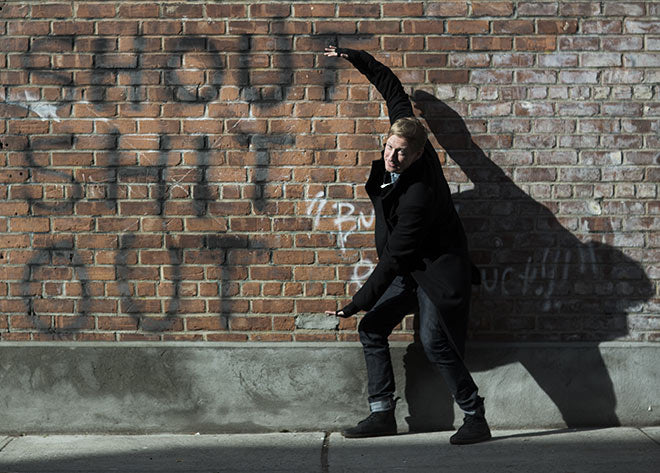
























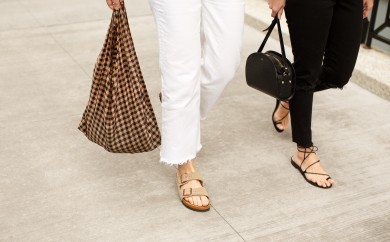
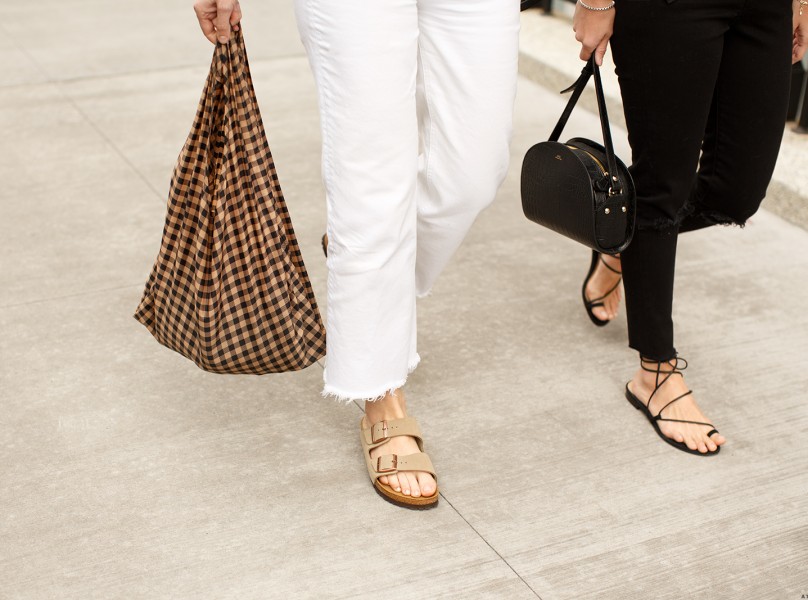
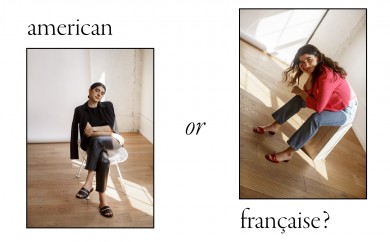
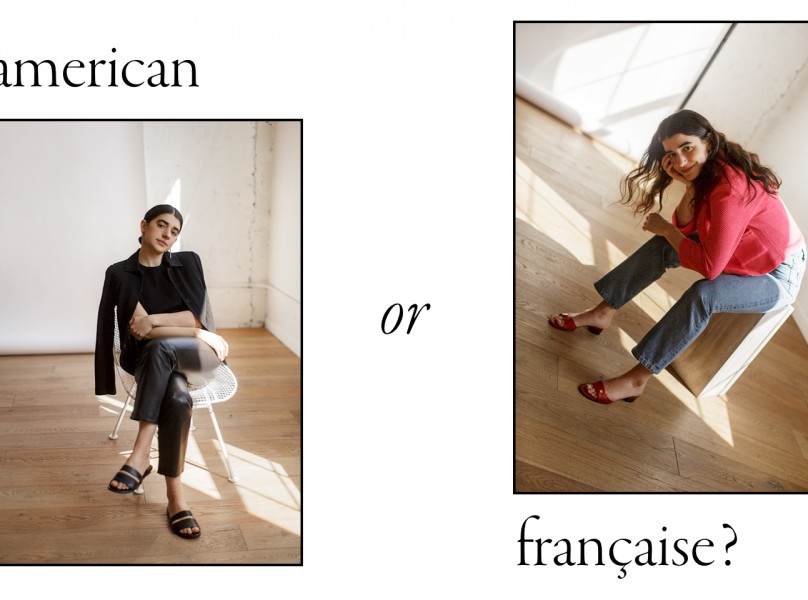

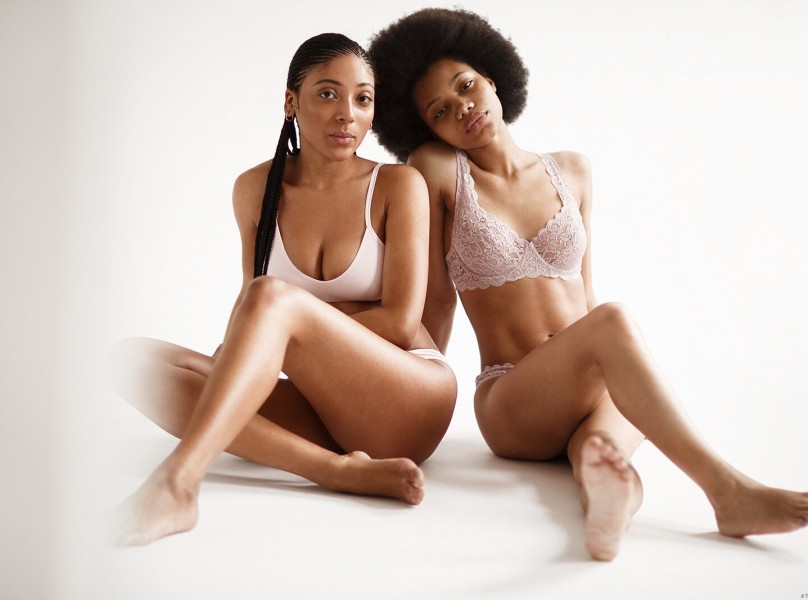




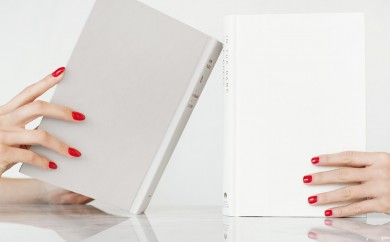
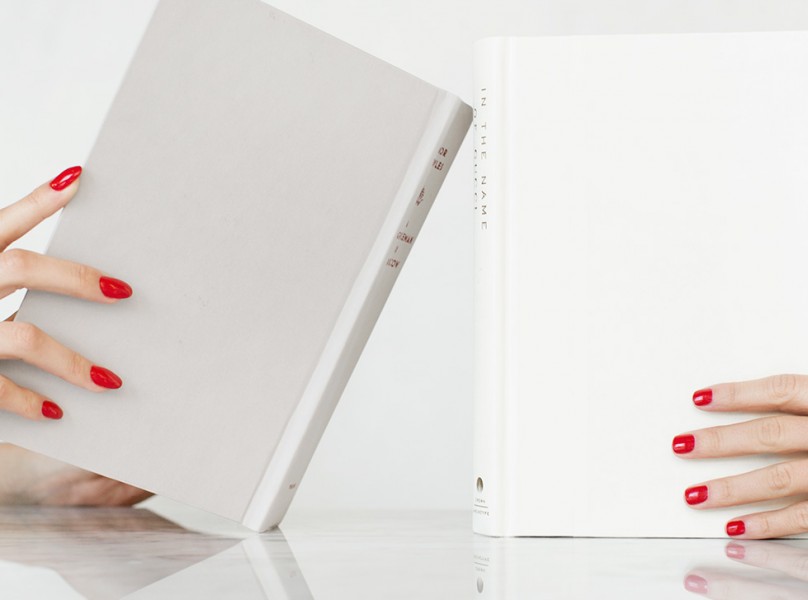
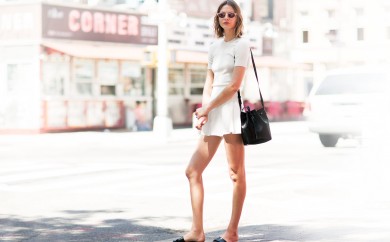

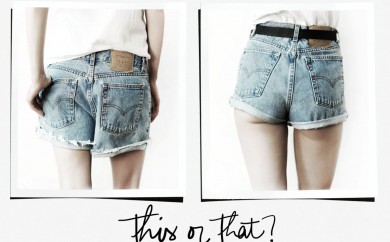
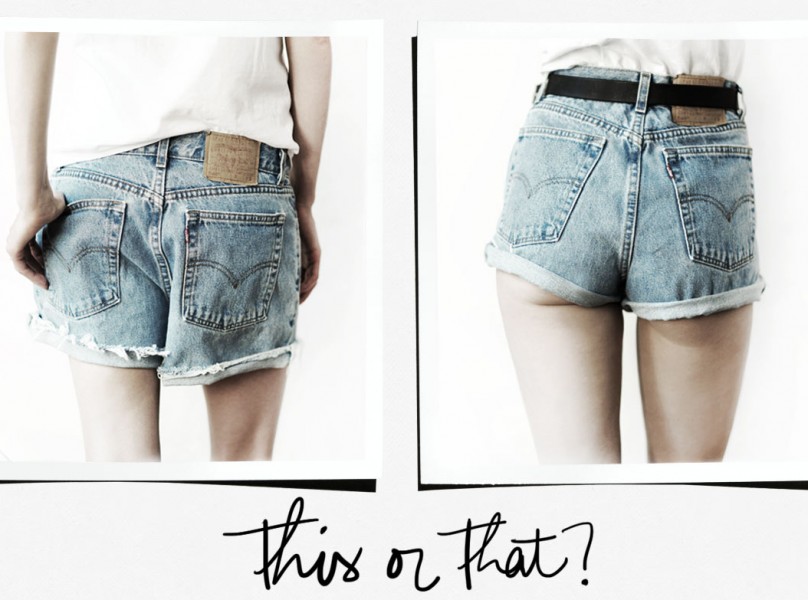
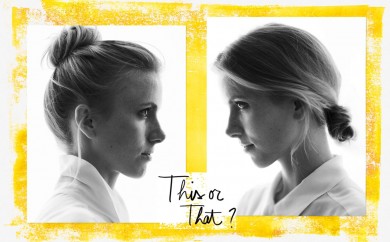
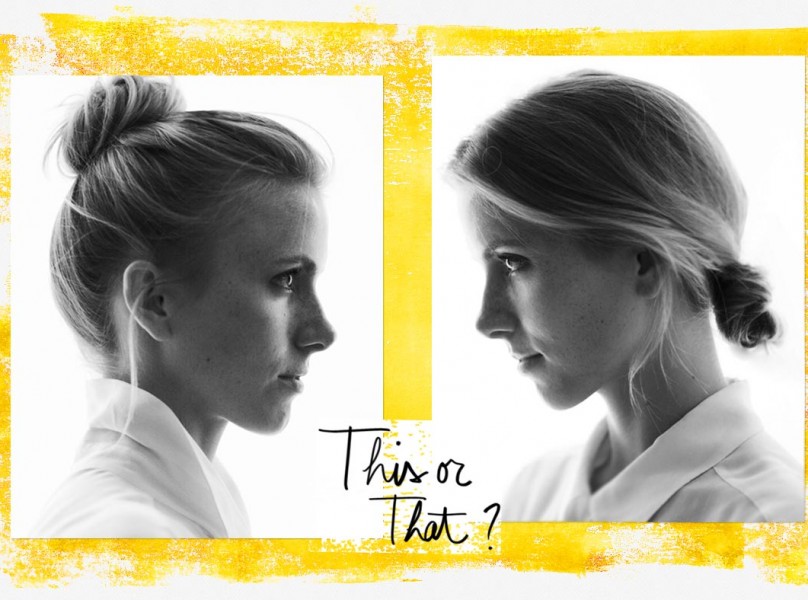

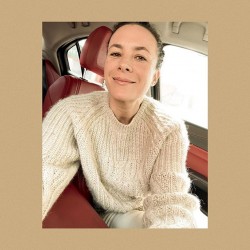

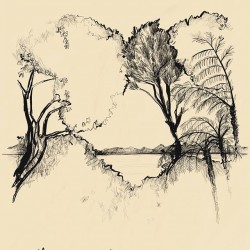
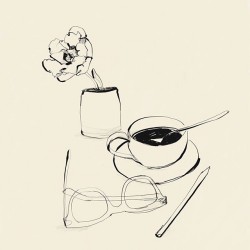
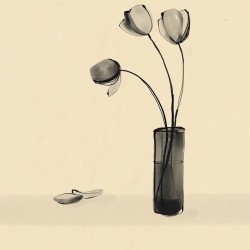
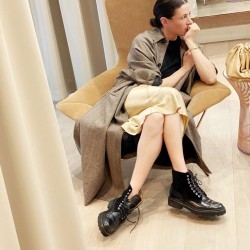
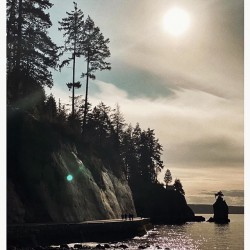
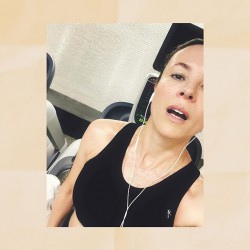
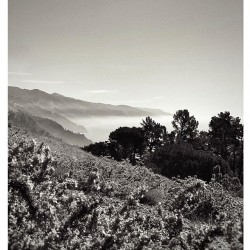
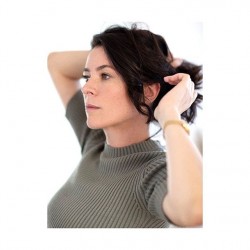
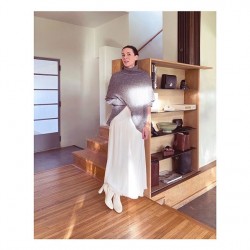
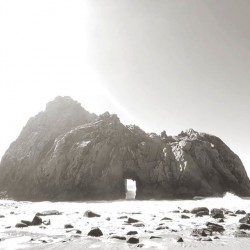

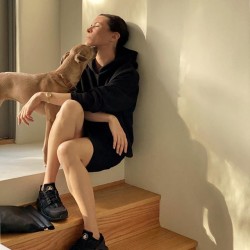
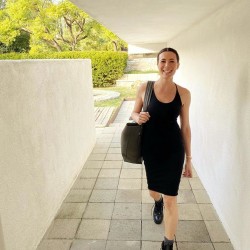
Really nice interview indeed! Thanks for sharing
http://bbconfidentielle.com/
i love the career posts! :)
http://littleaesthete.com
Super cette interview, quel personnage! Et puis il a vraiment un sourire ravageur, j’adore!
Mafalda
http://www.mafaldadotzero.blogspot.fr
Je pense que les mères aussi peuvent pousser leur enfant à avoir de l’ambition dans la vie…
A nice interview and a very interesting character!!
Kiss!
Passa a trovarmi VeryFP
This series is so well done and interesting, thank you!
Je trouve que c’est la meilleure des interviews carrière ou du moins celle qui me parle le plus ! Très inspirant et positif … il faut se faire confiance, il a raison Tim !
Merci le studio,
Ali
http://www.alidifirenze.fr
Très sympa cette trajectoire hors des sentiers battus, mais, une question… “whatever I can get away with.”… “I want to get away with whatever I can” , et sa traduction française > « Tout ce que j’arrive à faire sans que les gens se posent trop de questions ». Je me suis dit que moi aussi, c’était ça que j’avais envie de faire.” ? Qu’en penses-tu Garance? Il induit plutôt l’idée de faire ce qui lui plait, ce qui lui chante… Faire tout ce qui lui permet de s’en tirer, de s’en sortir, en faisant des choses qu’il aime faire… Je ne sais pas, je le comprends plutôt comme ça, mais s’il y a des spécialistes dans la place, qu’ils nous éclairent… ;) thx
Tu soulèves un point très juste ! Cette expression est vraiment complexe à traduire de façon à la fois fidèle et idiomatique… C’est vrai, il y a dans “Everything I can get away with” un peu ce “tout ce dont j’ai envie” mais aussi “tout ce qu’on me permet de faire”, “tout ce que je m’autorise à faire”… Enfin, on sent qu’il y a un refus de se cantonner à une seule chose là-dessous :-) je cherche encore une façon aussi naturelle de l’exprimer en français !
Terriblement inspirant! J’aimerais bien l’avoir comme mentor, celui-là! ;)
je suis une fille… il a un beau sourire ravageur!
oui je retiens surtout ça!
lol
bises
http://www.madeinsisters.com/
Another great one, loved this interview.
xo
PinkSole
Merci Garance pour ce post génial! Je ne lis pas toujours les Career Interviews jusqu’au bout mais celle-là m’a passionnée. And thanks to Tim for sharing!
xx
C
No, Garance, but you’ve really decided to turn your focus on guys!! It’s nice, for a change :)
Perfect post and I didnt know him till now.. Hm…
http://www.fashiondenis.com/
Bonjour, super interview très sincère…
Je suis 100% d’accord sur l’idée de mettre à jour son site avec ses créations… Nous avons dédié notre activité à cela, proposer des sites pour les indépendants qui se lancent.
Je suis ébloui par le charisme de son mode de réflèchir,son éthique,l’enthousiasme d’approcher ses passions,ses projets.Et ton interview est tellement intéréssant que j’ai l’impréssion d’etre assise a coté de vous et faire partie de votre chatter sympa.Really inspiring.
I’ve been visiting your blog regularly since very early on and I thought I would take the time to comment today to tell you how the recent ‘men posts’ have been such a cool and welcomed addition to the feel of the blog. As much as I always enjoy reading you (and now the rest of the team), as a guy, certain topics make me feel like I’m sometime crashing the party! A bit like listening to the girls’ conversation form the other side of the room and pretending not to care…
So cheers to that! And felicitations for not being afraid of letting this beautiful thing grow and evolve. Change can maybe confuse some readers but the honesty and spirit are clearly there.
Longue vie à GD!
Really loving and inspiring interview. One of my favorites so far. A great start to my morning–thanks!
Ah je crois que c’est celle que je préfère, la prise de risques et l’ouverture à l’inconnu, la faculté de se transformer en évoluant dans son travail, surtout ce message d’épanouissement au travers de ce qu’il entreprend est tellement vibrant et vivant. c’est une sorte de “rebirth” perpétuel stimulant, j’admire beaucoup ce type d’énergie. Merci merci de transmettre les valeurs qu’il incarne. Le travail sous cet angle est un plaisir !
I love this man.
Love this interview. I really do find what he says empowering and true, about seeking out what you want to do as much as who you want to work for. It’s really important, as I’ve come to find that out along my career path.
xoxo
http://www.thewrittenrunway.com
Garance, c’est hors-sujet avec l’interview carrière (merci de ne pas publier :) ) Je viens de jeter un oeil sur “40 days of Dating”! Je comprends toujours pas “vraiment” le concept de “dating”. Ce serait super de faire un autre post là dessus…
“I tell my students to read whatever makes your heart sing, be inspired by music, read a book on philosophy, read whatever, go climb that mountain, run through the forest with your lover.” A liberal arts alum, my life and career path has been extraordinarily influenced by having an open mind and a desire for adventure! Love this interview, Garance. Please keep them coming!
Interview passionnant!!!! merci Garance.
Great interview, very inspiring. I love the quote “If you don’ tike where you are going or if you hit a road block, then don’t keep clawing through the wall, just turn around and go a different way”.
http://www.emilyhartb.blogspot.ca
La meilleure des interviews jusqu’à présent selon moi. Elle me fait réfléchir, me poser tout plein de questions et surtout elle me dynamise!! merci Tim!
Great interview! I have been a fan of Tim ‘s since the beginning of the Forty Day project. I”m really happy to have two of may favorite influences unite! Thank you Garance!
What wonderful, honest advice. Thank you for sharing.
GREAT!!!
Merci Garance pour toutes ces interviews , je suis à l’aube de décider de ce que je voudrais faire pour le restant de ma vie mais ,manquant de determination et surtout d’ambitions , ces interviews constituent de précieuses mines d’idées et de profonde reflexion pour une étudiante paumée de terminale comme moi .
Merci mille fois .
La lecture de cette interview était un moment de pur régal.
C’est décidément très agréable de tomber sur des entretiens de cette qualité et de cette intégrité/sincérité sur le territoire prétendument léger d’un blog consacré à la mode. Mais la raison pour laquelle on continue de te lire après toutes ces années, avec des hauts et des bas, c’est par cette capacité que tu as a réinventer la chose, de façon très fluide et naturelle par ailleurs. Ce qu’on aimait au début est toujours là, rassurant, mais les lignes bougent progressivement, ce qui fait qu’on ne s’ennuie pas. C’est très rare, sur la blogosphère francophone fashion. Je dirais que tu es là seule être allée au bout de cette nécessité d’évolution, à ne t’être pas endormie sur une formule qui marche.
Je reviens sur cette histoire de légèreté : elle est toujours là, en fait, mais je dirais qu’elle est “habitée”. Elle est généreuse, aussi. Et ça, c’est très important. Ca fait beaucoup de bien.
En deux mots comme en cent : Merci, Garance. (Merci Tim !)
Great, honest article. Solid points for leaving Apple. Although after reading this I realized the rock I had been living under was indeed larger than I thought. I had never heard of the 40 Day Project. Ingenious concept, although I could never subject a close friend to the torture of dating me. I think they executed it quite well – until the end, that is – but that’s life. Great read.
And, as a (not heterosexual) girl i fully agree with @NYCBOY.
This Boys thematic is very refreshing because it softly challenges the codes and stereotypes of gender, and talk directly to an other public (BOYS, i’m speaking about you), even if you stay in a kind of “heterosexual girl perspective” (Remember a girl can also steal her girlfriend comb and shirts, hello <3)
Love GD anyway.
OMG TOO MUCH BRACKETS IN THERE.
Garance ce serait super si tu pouvais lui demander quelle formation ou école à Londres il recommanderait. Ou qu’il demande à un de ses mentors si lui ne connaît pas. J’aimerais informer un jeune homme à qui je vais d’ailleurs faire lire cette géniale interview. merci à vous deux !
Interview intéressante, merci!
En revanche, je ne comprends pas le principe du site 40 Days of Dating : le “couple” a décidé d’un commun accord de sortir ensemble pour en faire une expérience web? Ils se plaisaient mutuellement au départ, au moins??
Alors que ce n’est pas du tout mon univers, j’ai trouvé cette interview géniale. Il y parle à coeur ouvert, j’ai beaucoup aimé son honnêteté par rapport à des boulots qu’il accepte qui sont bien rémunérés mais qui ne sont pas particulièrement créatif pour lui. Pour finir, son conseil de s’ouvrir l’esprit par la musique, les lectures etc. s’applique à tous et devrait être une ligne de conduite pour toute personne qu’il soit scientifique, artiste, économiste, politique ou que sais-je encore !
My god he’s so sexy. Wow.
En fait le point commun de toutes ces ITW career, en dehors du talent et de l’ambition, ce sont surtout des rencontres déterminantes, des gens qui croient en toi et te pousses à aller au delà (je viens de voir le film YSL ! ceci explique sans doute cela !). Car finalement c’est bien souvent le regard bienveillant d’un être aimant (qui n’est pas forcément un amour d’ailleurs) qui manque à certain pour réussir. On a tous en nous du potentiel dans un domaine quelconque mais on ne fait pas forcément les bonnes rencontres, au bon moment, c’est toute la différence….
http://www.mode9.fr
A beautiful, inspiring interview! And forty days of dating! I was a bit sceptic before reading it but I am now so engrossed! Its providing such introspection! Thank you, Garance.
I really loved this interview
Very interesting interview! Are you planning to do follow-up questions on this one? If so, then my question to Tim is: How do you approach magazines as a freelance writer or illustrator?
Super nice. Could Tim Sullivan be next??
Thank you so much Garance for these career pieces, they are my favorite. Please stick with the detailed-ness of those as some of us need some guidance onto how the epiphany lands on one and how she goes after it.. Thank you !!! and happy MLK day!
my favorite one so far. inspiring.
So inspiring once again! Thank you so much! xxxxx
He’s a great guy. I’ve watched all the work you’ve done. I hope the new ones are on the way.